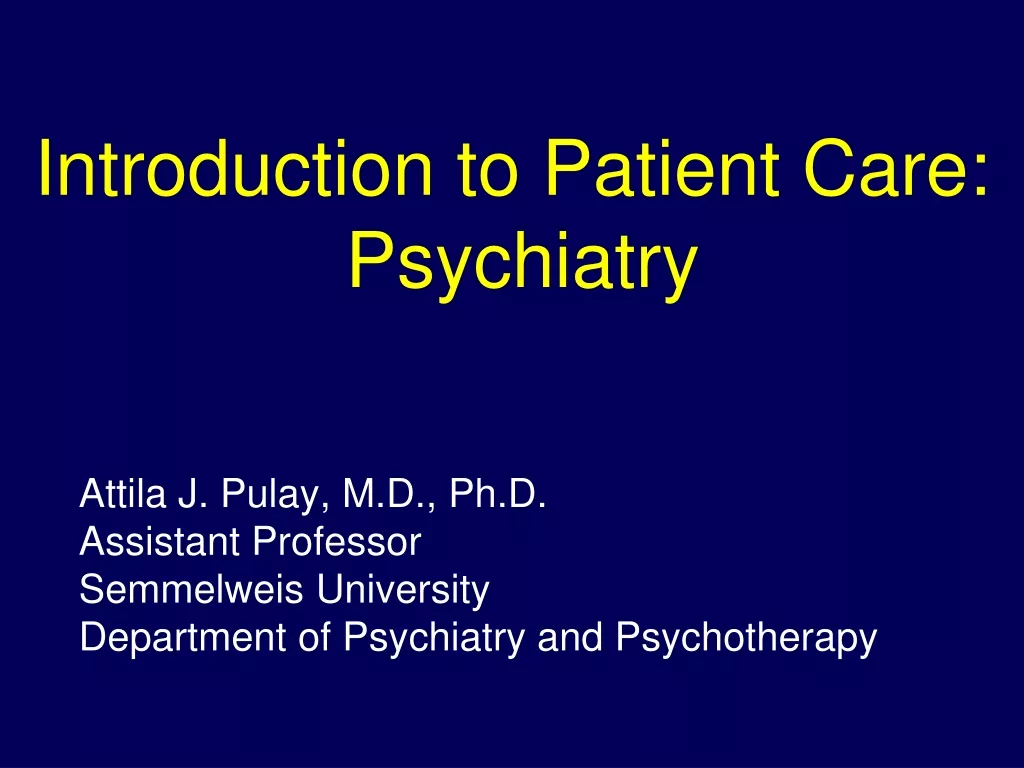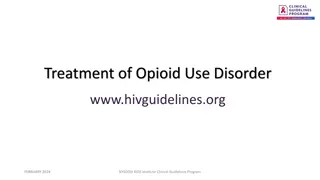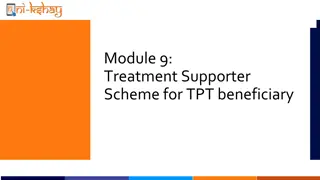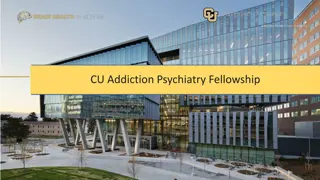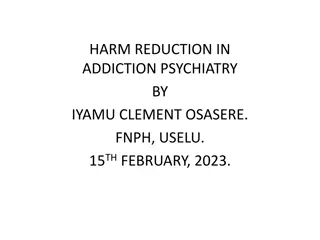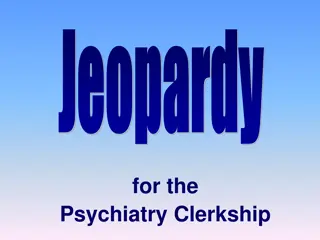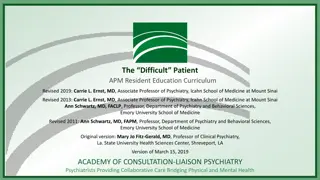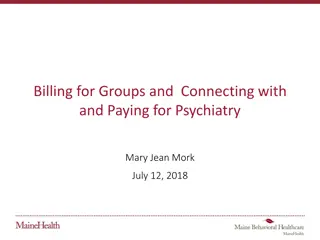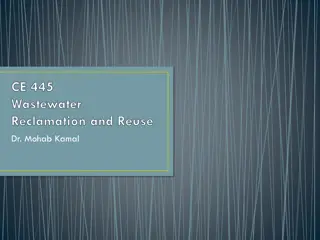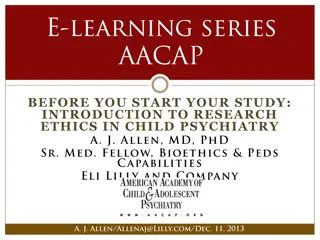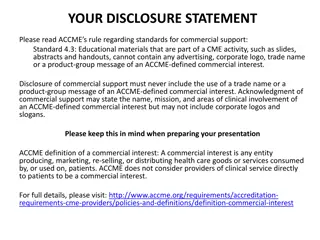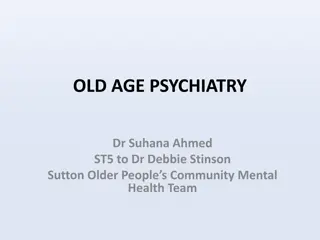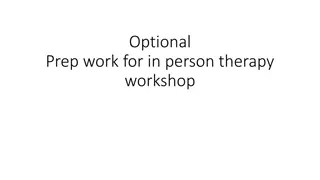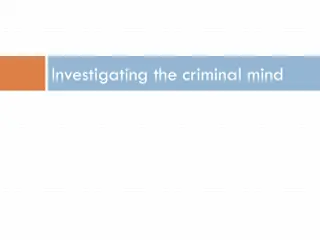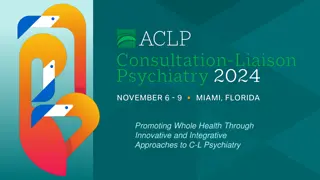TREATMENT METHODS IN PSYCHIATRY
Explore non-pharmacological treatments used in psychiatry to guide patient care effectively and improve mental health outcomes. Learn about various methods, including therapy, lifestyle changes, and alternative approaches for managing psychiatric conditions without medication.
Download Presentation

Please find below an Image/Link to download the presentation.
The content on the website is provided AS IS for your information and personal use only. It may not be sold, licensed, or shared on other websites without obtaining consent from the author.If you encounter any issues during the download, it is possible that the publisher has removed the file from their server.
You are allowed to download the files provided on this website for personal or commercial use, subject to the condition that they are used lawfully. All files are the property of their respective owners.
The content on the website is provided AS IS for your information and personal use only. It may not be sold, licensed, or shared on other websites without obtaining consent from the author.
E N D
Presentation Transcript
TREATMENT METHODS IN PSYCHIATRY Non-pharmacological Interventions
PSYCHOLOGICAL THERAPIES 1. Psychoanalytic therapy 2. Behavior therapy 3. Cognitive therapy / psychoeducation 4. Hypnosis 5. Abreaction therapy 6. Individual psychotherapy 7. Supportive psychotherapy 8. Group therapy 9. Family and marital therapy
1. Psychoanalytic Therapy developed by Sigmund Freud in late 19th century The most important indication for psychoanalytical therapy is the presence of longstanding mental conflicts, which may be unconscious but produce symptoms. The aim of the therapy is to bring all repressed material to conscious awareness so that the patient can work towards a healthy resolution of his problems, which are causing the symptoms. transference refers to the patient's development of strong positive or negative feelings towards the analyst, and counter transference is the therapist's reciprocal response to the patient
2. Behavior Therapy Behavior therapy involves identifying maladaptive behaviors and seeking to correct these by applying the principles of learning derived from the following theories: Classical conditioning model by Ivan Pavlov Operant conditioning model by BF Skinner
Behavior Techniques (A)Systematic desensitization It was developed by Joseph Wolpe, based on the behavioral principle of counter conditioning. In this patients attain a state of complete relaxation and are then exposed to the stimulus that elicits the anxiety response. It consists of three main steps: 1. Relaxation training 2. Hierarchy construction 3. Desensitization of the stimulus
1. Relaxation training: Jacobson's progressive muscle relaxation Hypnosis Meditation or yoga Mental imagery Biofeedback 2. Hierarchy construction: Here the patient is asked to list all the conditions which provoke anxiety in a descending order of anxiety provocation. 3. Desensitization of the stimulus: At first, the lowest item in hierarchy is confronted. The patient is advised to signal whenever anxiety is produced. With each signal he is asked to relax. After a few trials, patient is able to control his anxiety gradually.
B. FLOODING individual is exposed directly to a maximum- intensity anxiety-producing situation or stimulus, either described or real, without any attempt made to lessen or avoid anxiety or fear during the exposure. aims to diminish or extinguish the undesired response to a feared situation or stimulus used primarily in the treatment of individuals with phobias and similar disorders. distinct from systematic desensitization, which involves a gradual, step-by-step approach to encountering the feared situation or stimulus while attempting to maintain a non-anxious state.
C. Aversion therapy a type of behavioral therapy that involves repeat pairing an unwanted behavior with discomfort. For example, a person undergoing aversion therapy to stop smoking might receive an electrical shock every time they view an image of a cigarette. The goal of the conditioning process is to make the individual associate the stimulus with unpleasant or uncomfortable sensations.
D. Operant conditioning procedures for increasing adaptive behavior 1. Positive reinforcement the act of rewarding a positive behavior in order to encourage it to happen again in the future, E.g. Giving an A grade on the test as a positive reinforcement to continue studying. 2. Token economy In behavior therapy, a program, sometimes conducted in an institutional setting (e.g., a hospital or classroom), in which desired behavior is reinforced by offering tokens that can be exchanged for special foods, television time, passes, or other rewards.
3. Cognitive Therapy / psychoeducation Behavior is secondary to thinking. Self-defeating and self-depreciating patterns of thinking result in depressed mood. The therapist helps the patient by correcting this distorted way of thinking, feelings and behavior. The cognitive model of depression includes the cognitive triad: 1. A negative view about self 2. A negative view about the environment and 3. A negative view about the future These negative thoughts are modified to improve the depressive mood.
4. Hypnosis Hypnosis is an artificially induced state in which the person is relaxed and unusually suggestible Hypnosis can be induced in many ways, such as by using a fixed point for attention The person becomes highly suggestible to the commands of the hypnotist There is an ability to produce or remove symptoms or perceptions
5. Abreaction Therapy focuses on reliving a traumatic event and going through the emotions associated with them to heal and move forward. gives patients a way to release their unconscious pain and escape from the memories and feelings that have kept them from moving forward. use catharsis or the cleansing of emotions to get rid of the thoughts and feelings associated with brings out difficult emotions & the client will go through an emotional removal that takes away the burden of the traumatic event after treatment
6. Individual Psychotherapy Trained person deliberately establishes a professional relationship with the patient to remove, modify or retard existing symptoms Individual psychotherapy is conducted on a one-to-one basis, i.e. the therapist treats one client at a time The patient is encouraged to discover for himself the reasons for his behavior. The therapist listens to the patient and offers explanation and advice when necessary.
7. Supportive Psychotherapy helps the patient to relieve emotional distress and symptoms without probing into the past various techniques used are: Ventilation: Patient is encouraged to talk or express feelings freely whatever comes to mind. Environmental modification/manipulation: Improving the well-being of mental patients by changing their living condition. Persuasion: Here the therapist attempts to modify the patient's behavior by reasoning. Re-education: Education to the patient regarding his problems, ways of coping, etc. Reassurance
8. Group Therapy Carefully selected people who are emotionally ill meet in a group guided by a trained therapist, and help one another effect personality change. Therapeutic factors involved in group therapy Sharing experience Support to and from group members Socialization Imitation Interpersonal learning
9. Family and Marital Therapy The focus of treatment is not the individual, but the family. Used whenever there are relational problems within a family Components of Therapy Teaching communication skills Teaching problem solving skills Homework assignments



